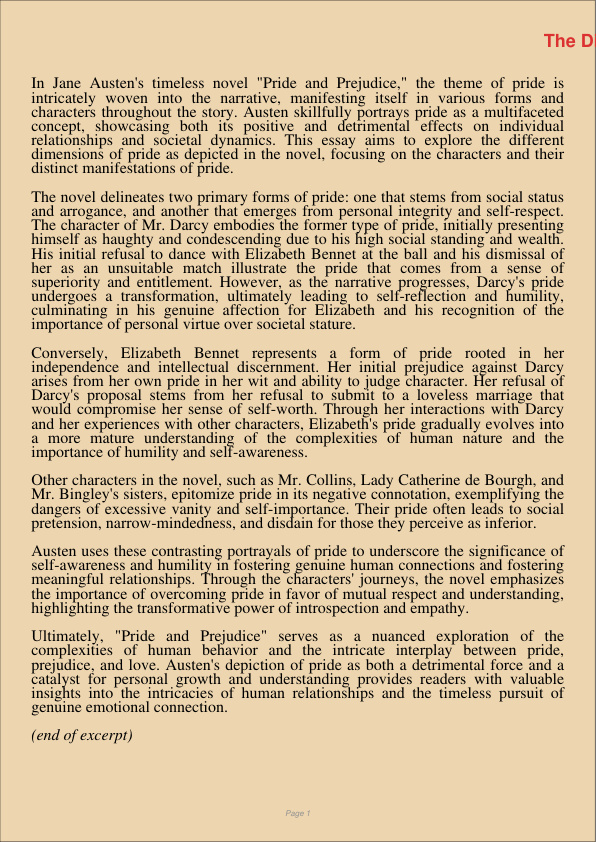The Different Concepts Of Pride In Pride And Prejudice A Novel By Jane Austen
Dec 31, 2023
jane austen
different concepts
Social science
Geography

In Jane Austen’s timeless novel “Pride and Prejudice,” the theme of pride is intricately woven into the narrative, manifesting itself in various forms and characters throughout the story. Austen skillfully portrays pride as a multifaceted concept, showcasing both its positive and detrimental effects on individual relationships and societal dynamics. This essay aims to explore the different dimensions of pride as depicted in the novel, focusing on the characters and their distinct manifestations of pride.
The novel delineates two primary forms of pride: one that stems from social status and arrogance, and another that emerges from personal integrity and self-respect. The character of Mr. Darcy embodies the former type of pride, initially presenting himself as haughty and condescending due to his high social standing and wealth. His initial refusal to dance with Elizabeth Bennet at the ball and his dismissal of her as an unsuitable match illustrate the pride that comes from a sense of superiority and entitlement. However, as the narrative progresses, Darcy’s pride undergoes a transformation, ultimately leading to self-reflection and humility, culminating in his genuine affection for Elizabeth and his recognition of the importance of personal virtue over societal stature.
Conversely, Elizabeth Bennet represents a form of pride rooted in her independence and intellectual discernment. Her initial prejudice against Darcy arises from her own pride in her wit and ability to judge character. Her refusal of Darcy’s proposal stems from her refusal to submit to a loveless marriage that would compromise her sense of self-worth. Through her interactions with Darcy and her experiences with other characters, Elizabeth’s pride gradually evolves into a more mature understanding of the complexities of human nature and the importance of humility and self-awareness.
Other characters in the novel, such as Mr. Collins, Lady Catherine de Bourgh, and Mr. Bingley’s sisters, epitomize pride in its negative connotation, exemplifying the dangers of excessive vanity and self-importance. Their pride often leads to social pretension, narrow-mindedness, and disdain for those they perceive as inferior.
Austen uses these contrasting portrayals of pride to underscore the significance of self-awareness and humility in fostering genuine human connections and fostering meaningful relationships. Through the characters’ journeys, the novel emphasizes the importance of overcoming pride in favor of mutual respect and understanding, highlighting the transformative power of introspection and empathy.
Ultimately, “Pride and Prejudice” serves as a nuanced exploration of the complexities of human behavior and the intricate interplay between pride, prejudice, and love. Austen’s depiction of pride as both a detrimental force and a catalyst for personal growth and understanding provides readers with valuable insights into the intricacies of human relationships and the timeless pursuit of genuine emotional connection.